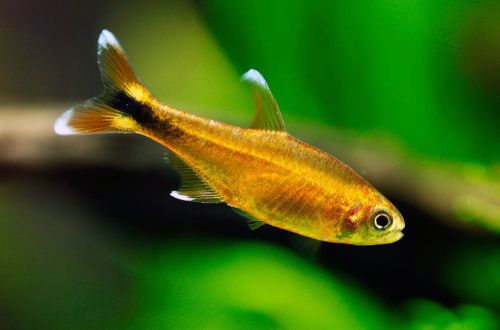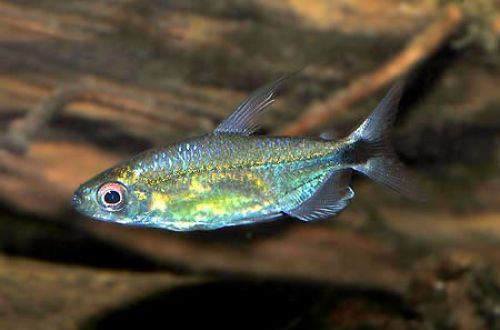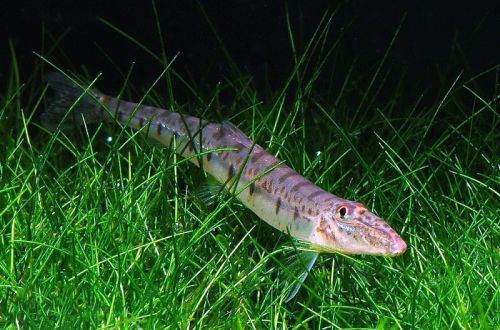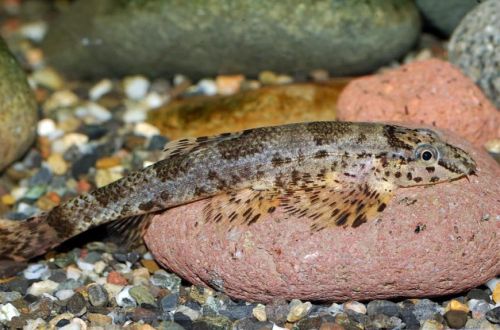
Hasemania
The copper tetra or Hasemania, scientific name Hasemania nana, belongs to the Characidae family. It is considered one of the best Tetras for the general aquarium due to its bright coloration, excellent compatibility with other popular fish, hardiness and unpretentiousness.

Contents
Habitat
It comes from the San Francisco River basin (port. Rio São Francisco) from the territory of Brazil. It occurs in small streams, rivers and channels of the main channel. The habitat experiences seasonal fluctuations in water levels, and the river itself flows through hilly, in places mountainous terrain.
Brief information:
- The volume of the aquarium – from 70 liters.
- Temperature – 23-28°C
- Value pH — 6.0–8.0
- Water hardness – soft to hard (5-20 dGH)
- Substrate type – any
- Lighting – subdued
- Brackish water – no
- Water movement – moderate
- The size of the fish is up to 5 cm.
- Food – any food
- Temperament – peaceful
- Keeping in a flock of at least 8-10 individuals
Description
Adults reach a length of about 5 cm. The color is silvery with a rich copper tint. Most of the caudal peduncle is dark, the tips of the tail and fins are white. Females are more modestly colored, the colors are not so saturated.
Food
Absolutely not pretentious appearance, the walls accept all types of popular food (dry, frozen, live). Their quality and composition largely affect the color of the fish, so strive to purchase food only from well-known and reputable manufacturers.
Maintenance and care, arrangement of the aquarium
For a group of fish of 8-10 individuals, a tank of 70 liters or more will be required. Hasemania is not demanding in the design of the aquarium and adapts perfectly to various water conditions. The only recommendation is the presence of subdued lighting, because in bright light the color of the fish noticeably fades, becomes nondescript.
Behavior and Compatibility
A peaceful schooling fish, kept in a group of at least 8–10 individuals, with a smaller number become somewhat aggressive, although with their size it is unlikely that they will be able to cause problems to their neighbors. Compatible with many well-known aquarium species, including viviparous, zebrafish, rasboras, corydoras catfish, some gourami, South American cichlids and others.
Breeding / breeding
The appearance of fry is possible even in a common aquarium, but their number will be very small and will decrease every day if they are not transplanted into a separate tank in time. It’s all the fault of adult fish, for which fry are a great addition to the diet.
In order to increase the chances of survival and somehow systematize the breeding process (spawning was not spontaneous), it is recommended to use a spawning aquarium, where sexually mature fish are placed during the mating season. Usually this is a small container with a volume of about 20 liters. The design is arbitrary, the main emphasis is on the substrate. In order to protect the eggs from being eaten (Tetra copper eats its own offspring), the bottom is covered with a fine-mesh net, or small-leaved plants or mosses (for example, Java moss). An alternative way is to place a layer of glass beads with a diameter of at least 1 cm. The lighting is subdued, a heater and a simple airlift filter are sufficient from the equipment.
The stimulus for the beginning of the mating season is a gradual change in the water parameters in the common aquarium to the following values: pH 6.0–6.5, dH 5–10 at a temperature of about 28–30°C. The basis of the diet should be frozen or live food.
Carefully observe the fish, soon some of them will noticeably round up – these will be females swollen from caviar. Males will begin to make sounds similar to croaking – this is a feature of this species and show signs of attention to their chosen ones. Prepare and fill the spawning tank with water from the community tank. Put the females there, the next day a couple of large males that look the most striking.
It remains to wait until spawning occurs, its end can be determined by females, they will “lose weight” greatly, and eggs will be noticeable among the vegetation (under a fine mesh). The fish are returned. The fry will appear within 24-36 hours, after another couple of days they will begin to swim freely in search of food. Feed with specialized microfeed.
Fish diseases
A balanced aquarium biosystem with suitable conditions is the best guarantee against the occurrence of any diseases, therefore, if the fish has changed behavior, color, unusual spots and other symptoms appear, first check the water parameters, and only then proceed to treatment.





